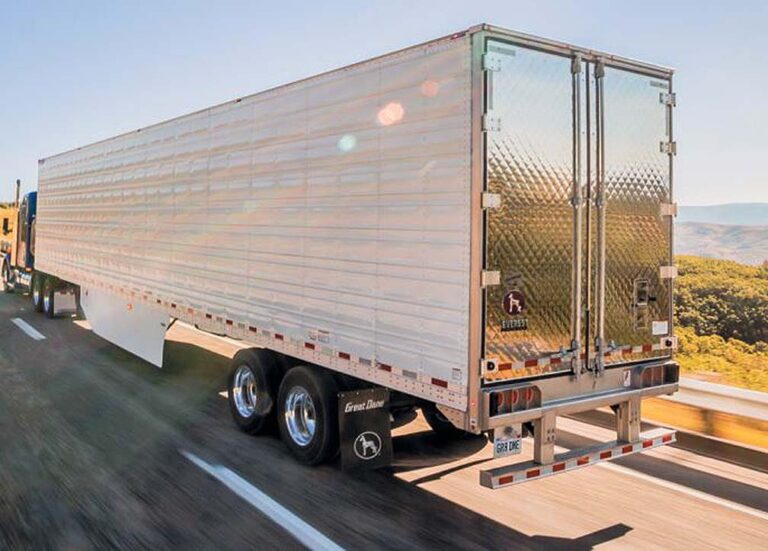COLUMBUS, Ind. — July net U.S. trailer orders of 16,997 units were 33% lower compared to last month, but more than 103% above the year-ago July level, according to this month’s issue of ACT Research’s State of the Industry: U.S. Trailers report.
“OEMS continue to negotiate with fleets, but with some 2023 orderboards opened in June, those efforts quickly moved to booked business, leaving a tougher month to which July orders were compared,” Jennifer McNealy, director of commercial vehicle market research and publications at ACT Research, said.
She added that discussions in June indicated that some manufacturers had opened part of their 2023 build slots, and “in July we learned that further opening isn’t expected soon, as manufacturers continue to wrestle with rolling supply-chain disruptions, as well as challenges on the labor front. That said, demand remains strong, despite increased pricing, and cancellations, although ticking upward, are insignificant, as fleets in queue need the equipment and plan to stay in queue until orders are converted to deliveries.”
TRAILER OVERBOARDS
According to this quarter’s issue of ACT Research’s Trailer Components Report, with only a portion of the 2023 U.S. trailer orderboards open and 2022 production slots full in aggregate, backlog-to-build ratios for the industry already stretch well into 2023.
ACT Research’s U.S. New Trailer Components and Materials Forecast provides those in the trailer production supply chain, as well as those who invest in said suppliers and commodities, with forecast quantities of components and raw materials required to support the trailer forecast for the coming five years.
It includes near-term quarterly predictions for two years, while the latter three years of the forecast are shown in annual details. Additionally, analysis is segmented into two categories: those needed for the structural composition of new trailers and those used in the production of undercarriage assembly.
“Until orderboards are opened deeper into next year, we expect orders and production to travel in lockstep,” McNealy said. “That said, demand remains strong, despite increased pricing, and cancellations, although ticking upward, are insignificant, as fleets in queue need the equipment and plan to stay in queue until orders are converted to deliveries. When more 2023 production slots become available, we anticipate a surge of orders to be ‘officially’ accepted.”
According to Eric Crawford, ACT Research’s vice president and senior analyst, demand remand remains strong.
“But as is the case with all things cyclical, we do not believe current strength is likely to last through 2023, as we now forecast a mild recession,” he said. “Inflation continues to impact OEMS. Difficulty in projecting part and material prices has made it difficult for manufacturers to set firm prices for trailers currently on order.”
When asked about build plan projections, he added, “they’ve changed significantly over the past three months. For 2022, easing supply-chain disruptions and still-strong demand have led us to increase our total U.S. trailer build forecast. That said, higher interest rates and our view that a recession is inbound have led us to reduce our 2023 and 2024 forecasts.”
Crawford concluded, “With supply and demand out of sync, and expected to remain there for the near-to-medium term, there is little incentive for a fleet to leave the orderboard when they already have a committed production slot. While build slot and pricing might not be as firm as fleets would prefer, it’s better than being on the outside looking in.”
The Trucker News Staff produces engaging content for not only TheTrucker.com, but also The Trucker Newspaper, which has been serving the trucking industry for more than 30 years. With a focus on drivers, the Trucker News Staff aims to provide relevant, objective content pertaining to the trucking segment of the transportation industry. The Trucker News Staff is based in Little Rock, Arkansas.








